Feedback-Oriented Intelligent Monitoring of a Storage-Based Solar Photovoltaic (PV)-Powered Microgrid with Mesh Networks
Abstract
:1. Introduction
2. Microgrid Architecture
2.1. Photovoltaic System
- : Peak power of the PV installation
- : Solar Irradiance at Standard Test Condition (Usually 1000 W/m2)
- : Ambient Temperature at Standard Test Condition (Usually 25 °C)
- : Inverter Efficiency
- : Transmission (Wire) Efficiency
- : Temperature co-efficient of PV module used for the installation.
2.2. Battery System
- is the power discharged by the battery bank to the load during the time t
- is the time difference
- is the discharge efficiency.
- is the power charged by the PV system into the battery bank during the time t
- is the time difference
- is the charging efficiency.
2.3. Load Profile
3. Microgrid Communication Architecture
- Intermittent nature: Renewable energy sources, with the virtue of being dependent on natural elements, are known for their notorious intermittency. When the proliferation of renewable energy based microgrids is increasing, there is a dire need in continuously monitoring the weather parameters, their influence on power generation and tune the system to adapt for extreme events.
- Bi-directional flow: With the advent of smart grid, electricity consumers are no longer solely consumers but are slowly turning into prosumers (Producer + Consumer). Distributed rooftop installations and smart meters are paving way to this revolution. Hence, an integrated communication architecture that can accommodate the requests from individual installations to grid and facilitate energy transfer in any direction is necessary to have integrated communication architecture.
3.1. Sensors
3.2. Network
- Fully connected, where all the nodes are connected to every other node.
- Partially connected, where it is not necessary for all nodes to be connected to each other.
3.3. Data Flow
4. Monitoring and Performance Feedback
- Monitoring: The software reads the data with respect to the tag of the device, data category and interprets it on a user interface.
- Feedback: The software verifies the data with respect to established rules and provides feedback about the status, working or problem, if any at a particular element from the data it receives.
- Control: Through the software, functions like shutdown, current flow or switching on/off of devices can be performed.
4.1. Monitoring
4.2. Feedback
4.2.1. PV Performance
4.2.2. Battery Status
- is the energy of battery at time t + 1
- is the energy of battery at time t
- is the power charged by the PV system into the battery bank during the time t
- is the power discharged by the battery bank to the load during the time t
- is the time difference
- is the charging efficiency
- is the discharge efficiency
- and are the minimum and maximum power that can be charged into the battery respectively.
- and are the minimum and maximum power discharge that can occur in the battery respectively.
- : Self-discharge energy loss of battery
- : Charge status of battery at time t + 1
- : Discharge status of battery at time t + 1.
4.2.3. Mesh Network
5. Results and Discussion
6. Conclusions
Conflicts of Interest
References
- Eltawil, M.A.; Zhao, Z. Grid-connected photovoltaic power systems: Technical and potential problems-A review. Renew. Sustain. Energy Rev. 2010, 14, 112–129. [Google Scholar] [CrossRef]
- Farhangi, H. The path of the smart grid. IEEE Power Energy Mag. 2010, 8, 18–28. [Google Scholar] [CrossRef]
- Yan, Y.; Qian, Y.; Sharif, H.; Tipper, D. A Survey on Smart Grid Communication Infrastructures: Motivations, Requirements and Challenges. IEEE Commun. Surv. Tutor. 2013, 15, 1–16. [Google Scholar] [CrossRef] [Green Version]
- Sood, V.K.; Fischer, D.; Eklund, J.M.; Brown, T. Developing a communication infrastructure for the smart grid. IEEE Electr. Power Energy Conf. 2009, 4, 1–7. [Google Scholar]
- Chang, G.W.; Zeng, G.F.; Su, H.J.; Hsu, L.Y.; Chang, Y.R.; Lee, Y.D.; Lin, C.H. Modelling and simulation for INER AC microgrid control. In Proceedings of the PES General Meeting | Conference & Exposition, National Harbor, MD, USA, 27–31 July 2014. [Google Scholar]
- Rana, M.M.; Li, L. Kalman Filter Based Microgrid State Estimation Using the Internet of Things Communication Network. In Proceedings of the 12th International Conference on Information Technology—New Generations, Las Vegas, NV, USA, 13–15 April 2015; pp. 501–505. [Google Scholar]
- Ku, T.; Park, W. IoT Energy Management Platform for MicroGrid. In Proceedings of the 7th International Conference on Power and Energy Systems, Toronto, ON, Canada, 1–3 November 2017; pp. 106–110. [Google Scholar]
- Khalil, A.; Ateea, K. Modelling and Control of Photovoltaic-Based Microgrid. Int. J. Renew. Energy Res. 2015, 5, 826–835. [Google Scholar]
- Bhavsar, Y.S.; Joshi, P.V.; Akolkar, S.M. Simulation of Microgrid with energy management system. In Proceedings of the International Conference on Energy Systems and Applications, Pune, India, 30 October–1 November 2016; pp. 592–596. [Google Scholar]
- Ali, Q.I.; Abdulmaowjod, A.; Mohammed, H.M. Simulation & performance study of wireless sensor network (WSN) using MATLAB. In Proceedings of the 1st International Conference on Energy, Power and Control, Basrah, Iraq, 30 November–2 December 2010; pp. 307–314. [Google Scholar]
- Ye, F.; Member, S.; Qian, Y.; Member, S.; Hu, R.Q.; Member, S. Energy Efficient Self-Sustaining Wireless Neighborhood Area Network Design for Smart Grid. IEEE Trans. Smart Grid 2015, 6, 220–229. [Google Scholar] [CrossRef]
- Spanò, E.; Niccolini, L.; di Pascoli, S.; Iannaccone, G. Last-meter smart grid embedded in an internet-of-things platform. IEEE Trans. Smart Grid 2015, 6, 468–476. [Google Scholar] [CrossRef]
- Kristensen, T.l.F.; Olsen, R.L.; Rasmussen, J.G.; Schwefel, H.-P. Information access for event-driven smart grid controllers. Sustain. Energy Grids Netw. 2018, 13, 78–92. [Google Scholar] [CrossRef]
- Anderson, D.; Gkountouvas, T.; Meng, M.; Birman, K.; Bose, A.; Hauser, C.; Litvinov, E.; Luo, X.; Zhang, F. GridCloud: Infrastructure for Cloud-based Wide Area Monitoring of Bulk Electric Power Grids. IEEE Trans. Smart Grid 2018. [Google Scholar] [CrossRef]
- Choi, J.; Shin, Y.; Choi, M.; Park, W.-K.; Lee, I.-W. Robust Control of a Microgrid Energy Storage System using Various Approaches. IEEE Trans. Smart Grid 2018, 7, 1. [Google Scholar] [CrossRef]
- Al-Barazanchi, S.A.M.; Vural, A.M. Modeling and intelligent control of a stand-alone PV-Wind-Diesel-Battery hybrid system. In Proceedings of the International Conference on Control, Instrumentation, Communication and Computational Technologies, Kumaracoil, India, 18–19 December 2015; pp. 423–430. [Google Scholar]
- Phung, M.D.; De La Villefromoy, M.; Ha, Q. Management of solar energy in microgrids using IoT-based dependable control. In Proceedings of the International Conference on Electrical Machines and Systems (ICEMS), Sydney, NSW, Australia, 11–14 August 2017. [Google Scholar]
- Frey, S.; Diaconescu, A.; Menga, D.; Demeure, I. A holonic control architecture for a heterogeneous multi-objective Smart Micro-Grid. In Proceedings of the 7th International Conference on Self-Adaptive and Self-Organizing Systems, Philadelphia, PA, USA, 9–13 September 2013; pp. 21–30. [Google Scholar]
- Bisht, M.S.; Sathans. Fuzzy based intelligent frequency control strategy in standalone hybrid AC microgrid. In Proceedings of the IEEE Conference on Control Applications, Juan Les Antibes, France, 8–10 October 2014; pp. 873–878. [Google Scholar]
- Tiwari, S.K.; Singh, B.; Goel, P.K. Design and Control of Micro-Grid fed by Renewable Energy Generating Sources. IEEE Trans. Ind. Appl. 2018, 9994, 1–9. [Google Scholar]
- Mi, Y.; Zhang, H.; Member, S.; Fu, Y.; Wang, C. Intelligent Power Sharing of DC Isolated Microgrid Based on Fuzzy Sliding Mode Droop Control. IEEE Trans. Smart Grid 2017. [Google Scholar] [CrossRef]
- Grilo, A.P.; Gao, P.; Xu, W.; De Almeida, M.C. Load monitoring using distributed voltage sensors and current estimation algorithms. IEEE Trans. Smart Grid 2014, 5, 1920–1928. [Google Scholar] [CrossRef]
- Chakraborty, P.; Baeyens, E.; Khargonekar, P.P. Distributed control of flexible demand using proportional allocation mechanism in a smart grid: Game theoretic interaction and price of anarchy. Sustain. Energy Grids Netw. 2017, 12, 30–39. [Google Scholar] [CrossRef]
- Krismanto, A.U.; Mithulananthan, N.; Krause, O. Sustainable Energy, Grids and Networks Stability of Renewable Energy based Microgrid in Autonomous Operation. Sustain. Energy Grids Netw. 2018, 13, 134–147. [Google Scholar] [CrossRef]
- McMillin, B.; Roth, T. Cyber-Physical Security and Privacy in the Electric Smart Grid. Synth. Lect. Inf. Secur. Priv. Trust 2017, 9, 1–64. [Google Scholar] [CrossRef]
- He, Y.; Mendis, G.J.; Wei, J. Real-Time Detection of False Data Injection Attacks in Smart Grid: A Deep Learning-Based Intelligent Mechanism. IEEE Trans. Smart Grid 2017, 8, 2505–2516. [Google Scholar] [CrossRef]
- Khatib, T.; Elmenreich, W. Novel simplified hourly energy flow models for photovoltaic power systems. Energy Convers. Manag. 2017, 79, 441–448. [Google Scholar] [CrossRef]
- Chen, S.X.; Gooi, H.B.; Wang, M.Q. Sizing of energy storage for microgrids. IEEE Trans. Smart Grid 2012, 3, 142–151. [Google Scholar] [CrossRef]
- Hubble, A.H.; Ustun, T.S. Composition, placement, and economics of rural microgrids for ensuring sustainable development. Sustain. Energy Grids Netw. 2018, 13, 1–18. [Google Scholar] [CrossRef]
- PHOTOVOLTAIC SOTWARE. Available online: Pvsyst.com (accessed on 23 January 2018).


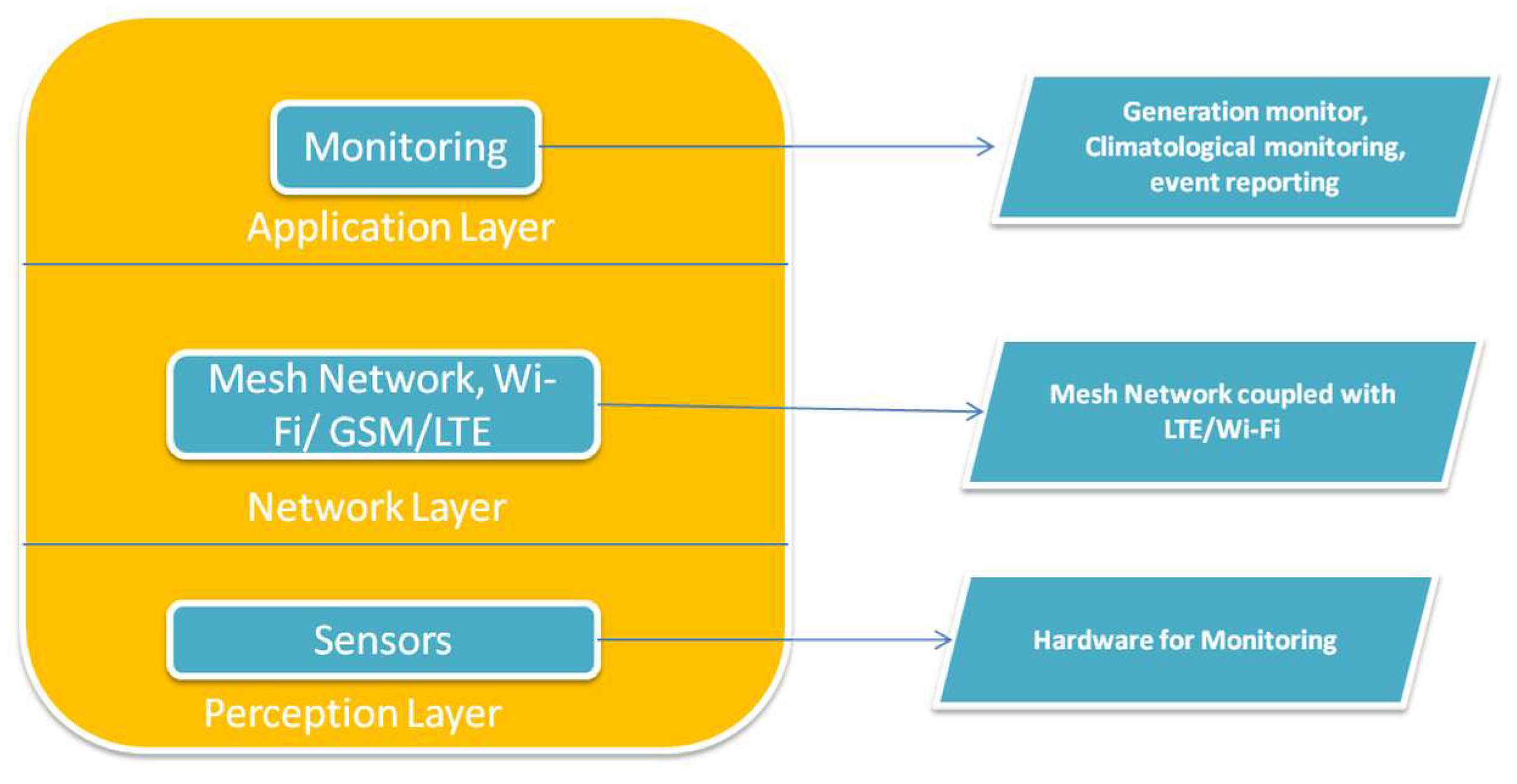


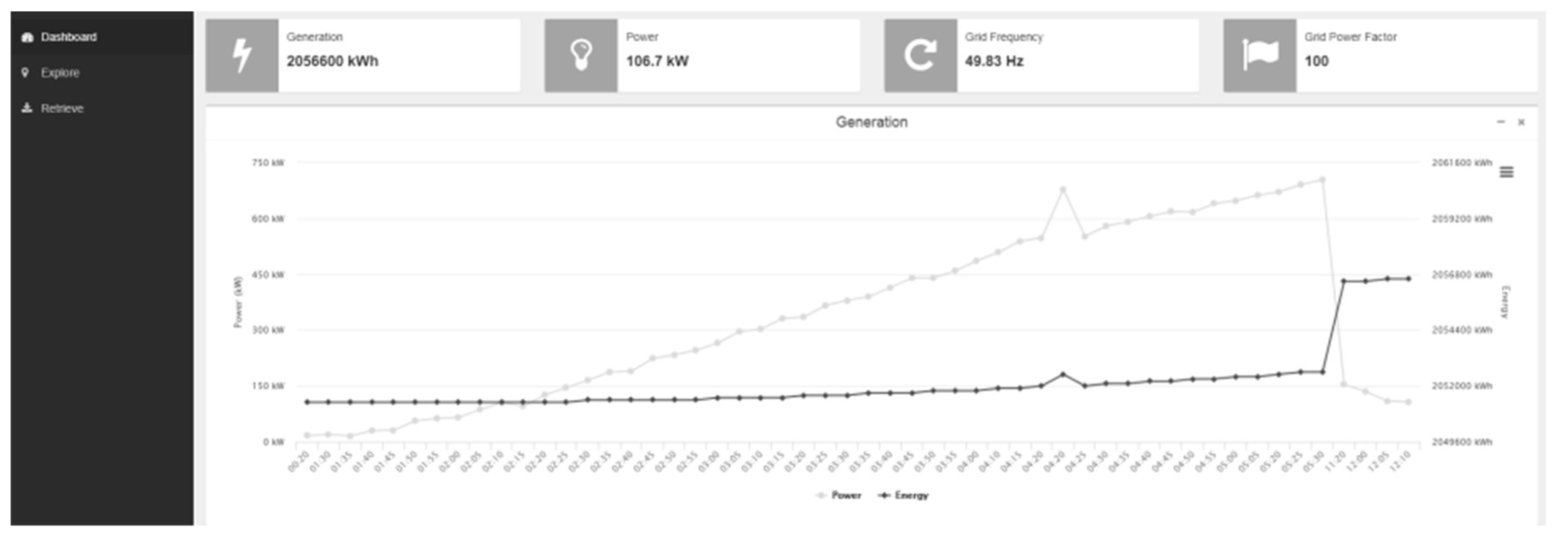
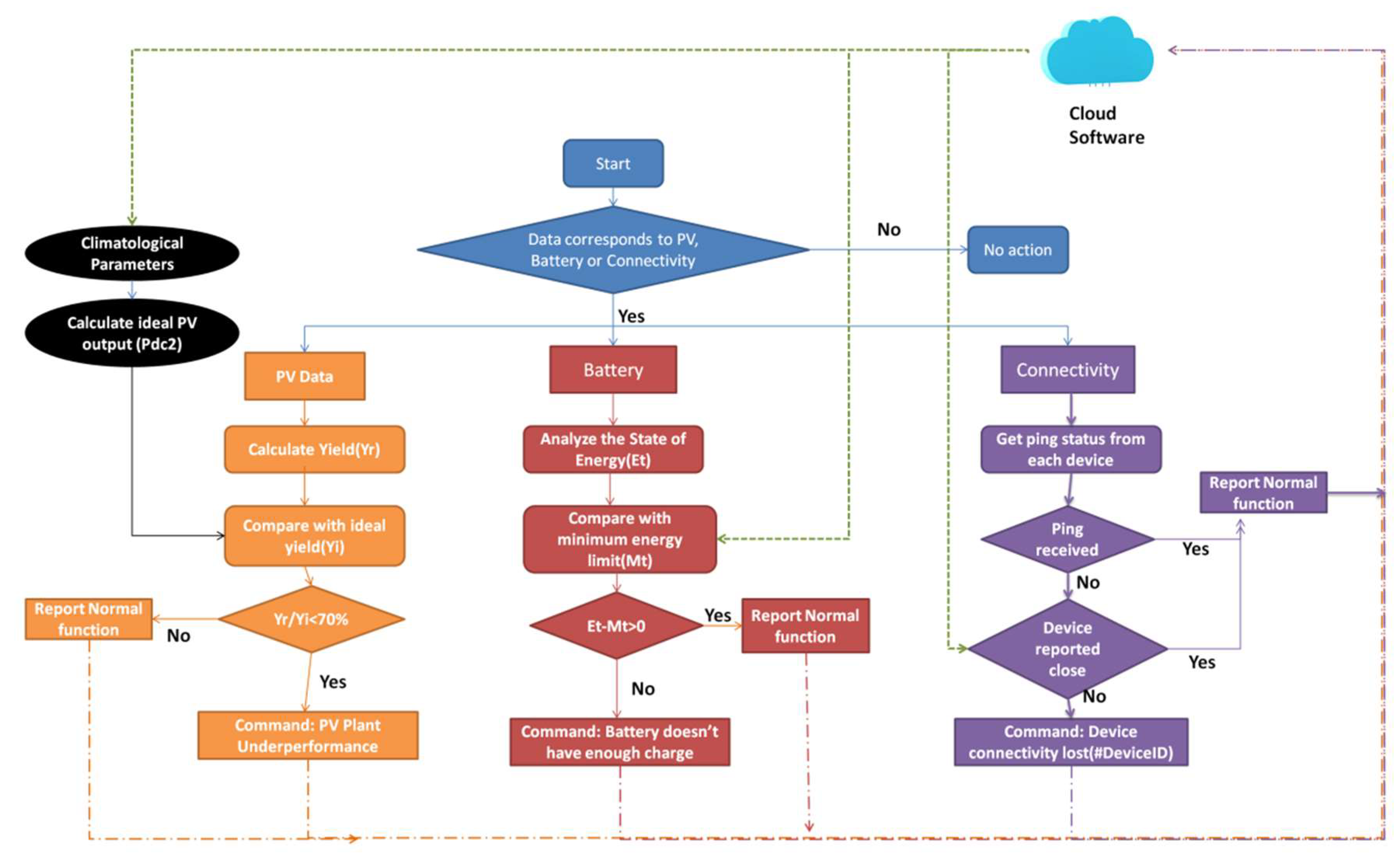
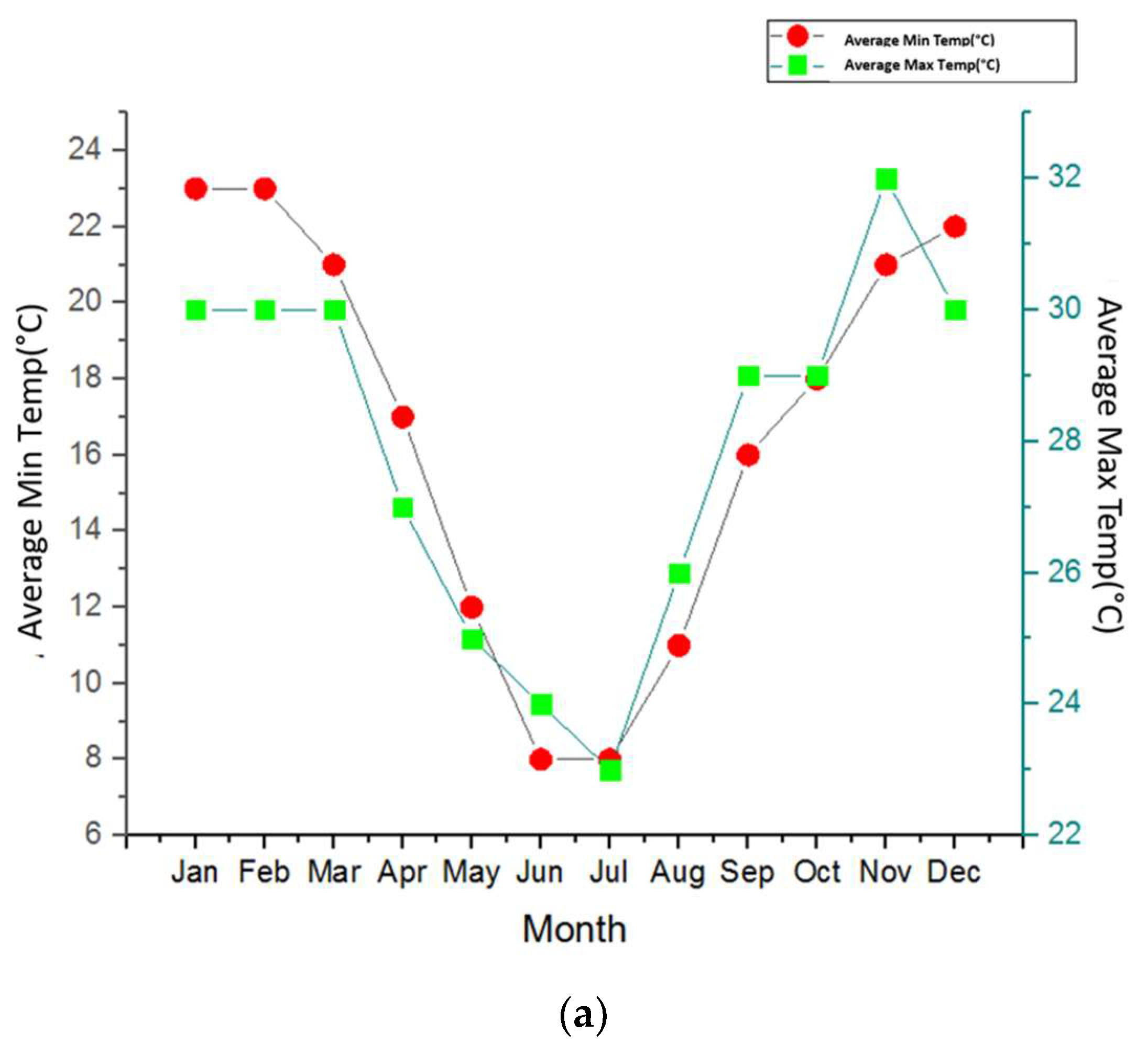
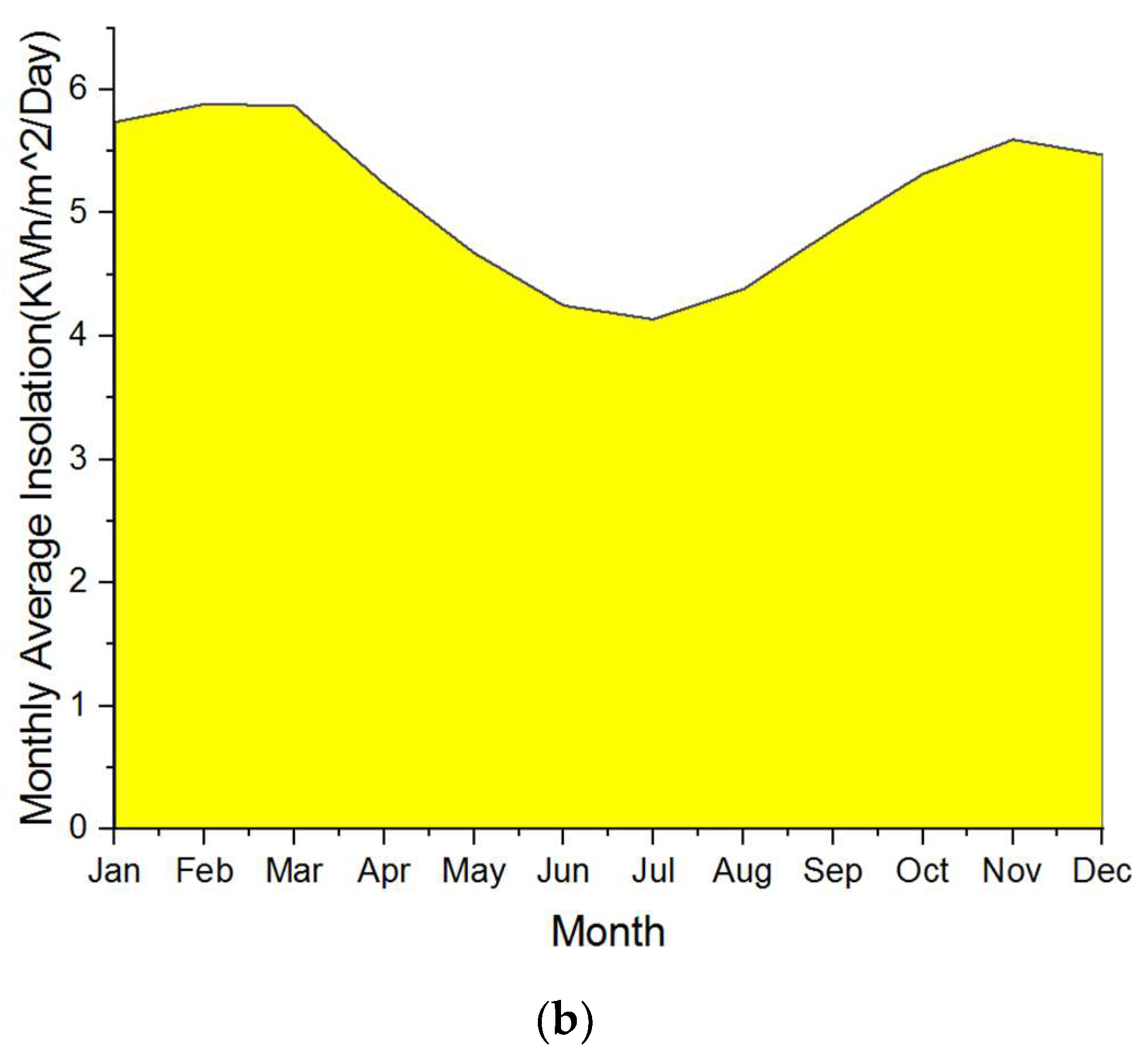


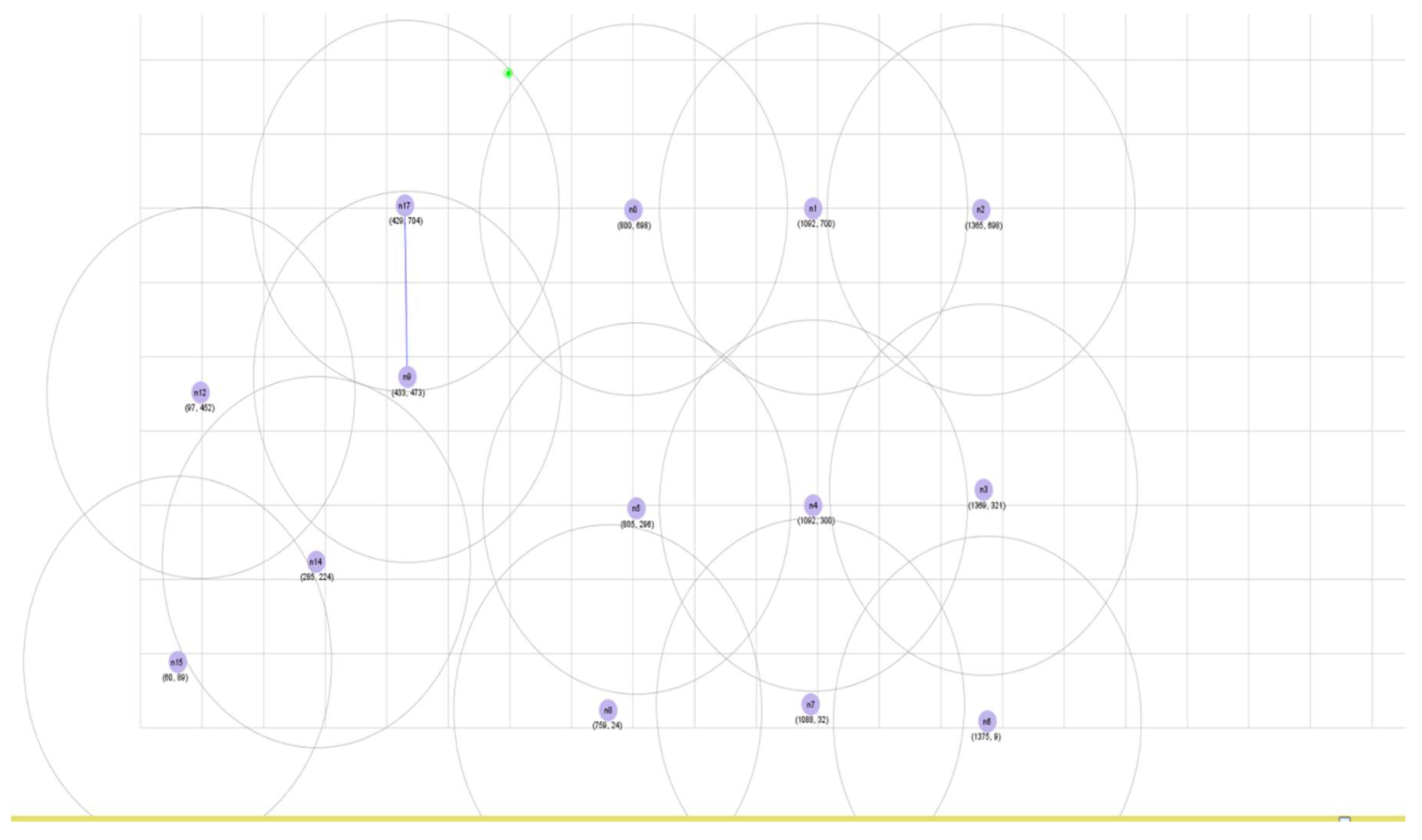


| S. No. | Data Category | Parameters |
|---|---|---|
| 1 | General Data |
|
| 2 | Generation Data |
|
| 3 | Consumption Data |
|
| 4 | Climatological Data |
|
| S. No. | Element | Value |
|---|---|---|
| 1 | Number of households | 75 |
| 2 | PV system capacity | 50 kW |
| 3 | Battery capacity | 68 kWh |
| 4 | Average daily load requirement | 98 kWh |
| 5 | Average Insolation | 6.2 kWh/m2/day |
© 2018 by the author. Licensee MDPI, Basel, Switzerland. This article is an open access article distributed under the terms and conditions of the Creative Commons Attribution (CC BY) license (http://creativecommons.org/licenses/by/4.0/).
Share and Cite
Almadhor, A. Feedback-Oriented Intelligent Monitoring of a Storage-Based Solar Photovoltaic (PV)-Powered Microgrid with Mesh Networks. Energies 2018, 11, 1446. https://doi.org/10.3390/en11061446
Almadhor A. Feedback-Oriented Intelligent Monitoring of a Storage-Based Solar Photovoltaic (PV)-Powered Microgrid with Mesh Networks. Energies. 2018; 11(6):1446. https://doi.org/10.3390/en11061446
Chicago/Turabian StyleAlmadhor, Ahmad. 2018. "Feedback-Oriented Intelligent Monitoring of a Storage-Based Solar Photovoltaic (PV)-Powered Microgrid with Mesh Networks" Energies 11, no. 6: 1446. https://doi.org/10.3390/en11061446
APA StyleAlmadhor, A. (2018). Feedback-Oriented Intelligent Monitoring of a Storage-Based Solar Photovoltaic (PV)-Powered Microgrid with Mesh Networks. Energies, 11(6), 1446. https://doi.org/10.3390/en11061446





